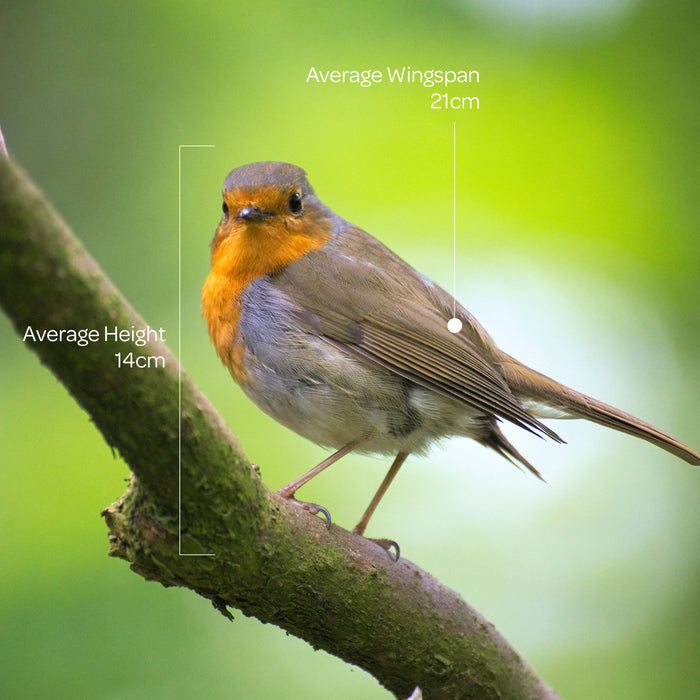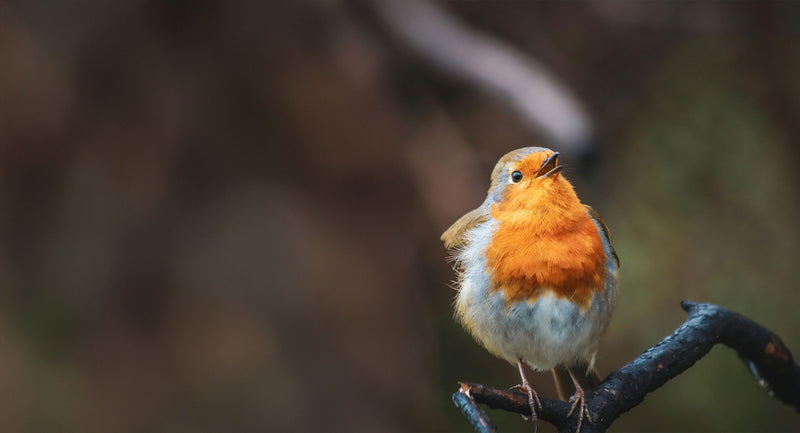
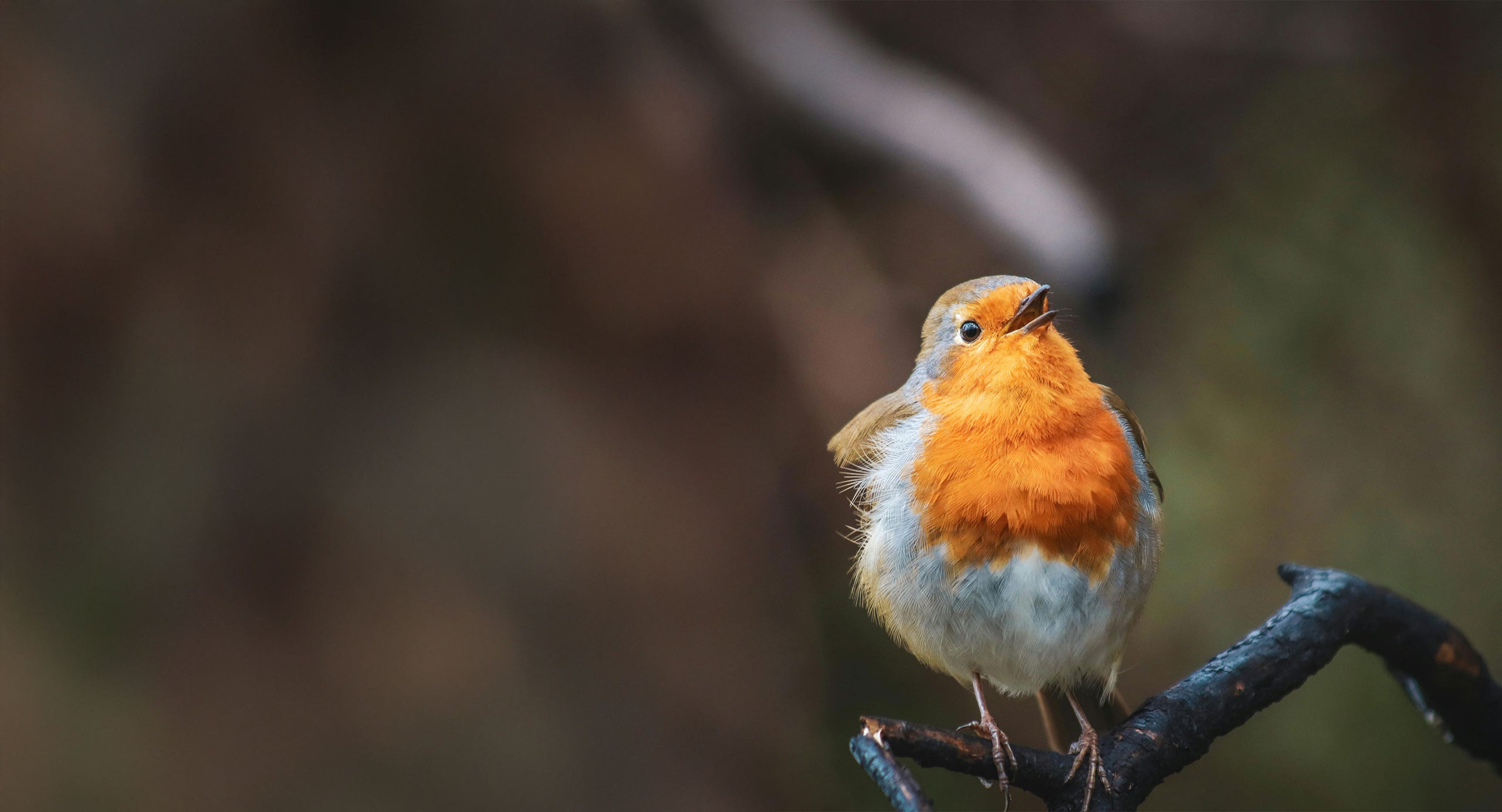
British Bird Identifier Guide
Within the calm confines of British gardens, many birds come and go throughout the year. Some birds appear frequently from spring through to winter yet others may only be spotted seasonally. Our gardens are an attractive habitat for wild birds with safe nesting opportunities and reliable food sources.
Our bird identifier guide is here to help you find out which bird species have been visiting your garden. From the iconic red-breasted robin, a symbol of winter resilience, to the elegant charm of the blue tit, with its vibrant, trailing colours and playful antics, these British birds enrich the garden landscape with their grace and vitality.
Many of these birds are frequent visitors, stopping by throughout the year. According to RSPB Big Garden Birdwatch in 2023 the house sparrows celebrate their 20th year as the number one bird spotted in UK gardens. Identifying the different species that visit can sometimes be tricky, especially with so many lookalikes. Our guide includes the top british garden birds that will often make an appearance in your garden.
Popular British Garden Birds
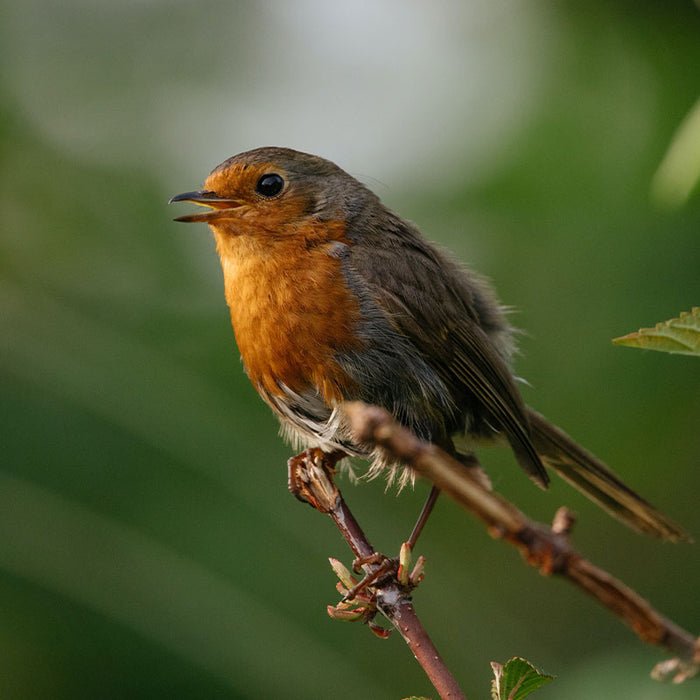
Robin
The robin, with its distinctive red breast, is perhaps one of the most beloved garden birds in Britain. Often spotted hopping around flower beds or perched on garden tools, robins are known for their friendly demeanour. They are year-round residents; their cheerful songs brightening up even the dullest of days.
View >>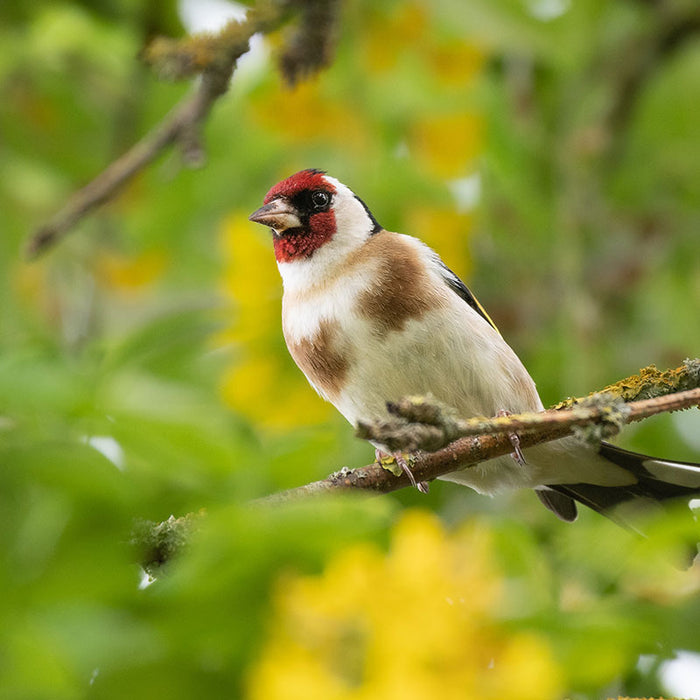
Goldfinch
Goldfinches are renowned for their stunning plumage, featuring a bright red face and a golden-yellow wing stripe. They are often seen perched atop thistle heads, feeding on seeds with their specialised bills. Their tinkling, twittering calls add to the ambience of gardens and parks.
View >>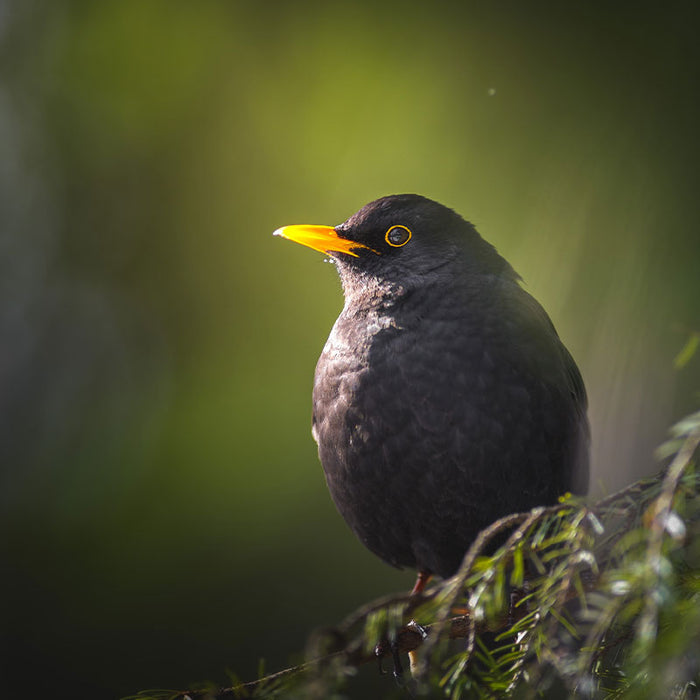
Blackbird
The male blackbird, with its glossy black plumage and striking yellow beak, is a common sight across Britain. Known for its beautiful song, particularly during the early morning hours, the blackbird adds a melodious soundtrack to garden life. They often forage for insects and berries on lawns and in shrubbery.
View >>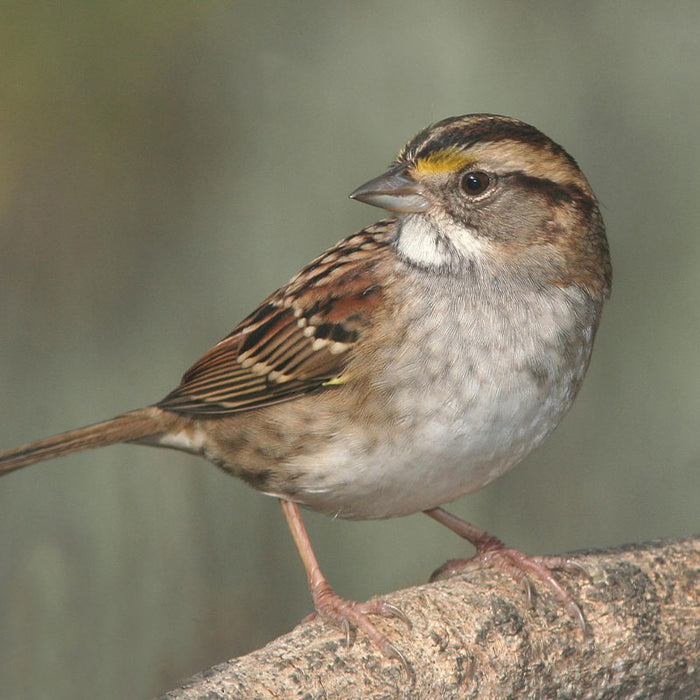
House Sparrow
Although their numbers have declined in recent years, house sparrows remain a familiar sight in many British gardens. These small, brown birds with distinctive black markings around their eyes are often found in flocks, chirping away in the bushes or scavenging for food on the ground.
View >>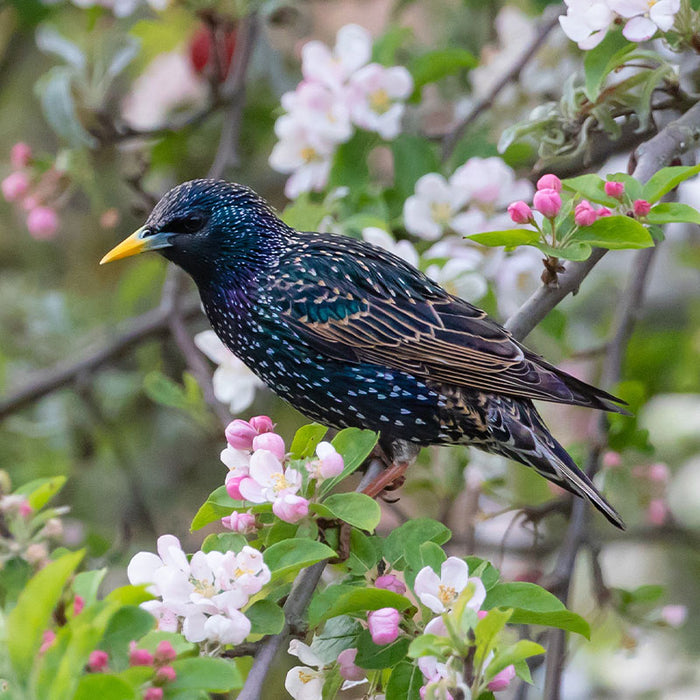
Starling
Starlings may not always be the most appreciated visitors due to their noisy chatter and large flocks, but they are undoubtedly fascinating birds. Their iridescent plumage, especially in the sunlight, is a sight to behold. Starlings are skilled mimics and are known to copy car alarms and mobile ringtones!
View >>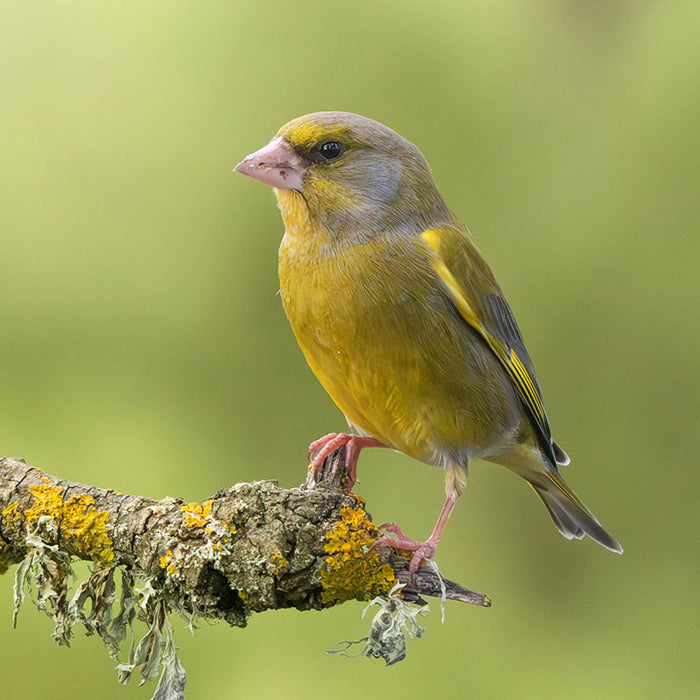
Greenfinch
With its vibrant green and yellow plumage, the greenfinch is a striking sight in any garden. These medium-sized finches are often seen perched on branches or hopping around on the ground in search of seeds. Their stout, conical bills are well-adapted for cracking open various seeds, making them frequent visitors to bird feeders stocked with sunflower seeds and other grains.
View >>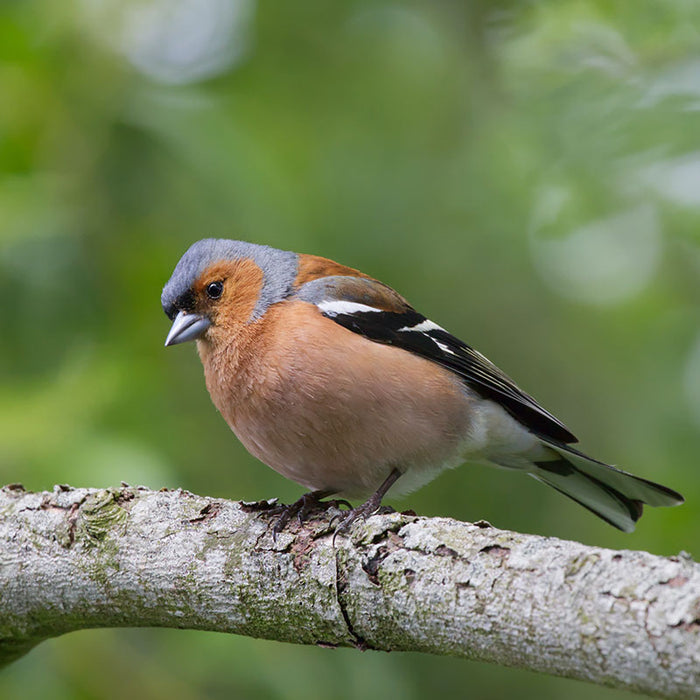
Chaffinch
The chaffinch is a medium-sized finch that is abundant throughout Britain, often seen in woodlands, parks, and gardens. Both male and female chaffinches sport a distinctive white wing-bar and white outer tail feathers. The male's plumage is more vibrant, with a pinkish-red breast and cheeks, contrasting with shades of blue-grey on its back.
View >>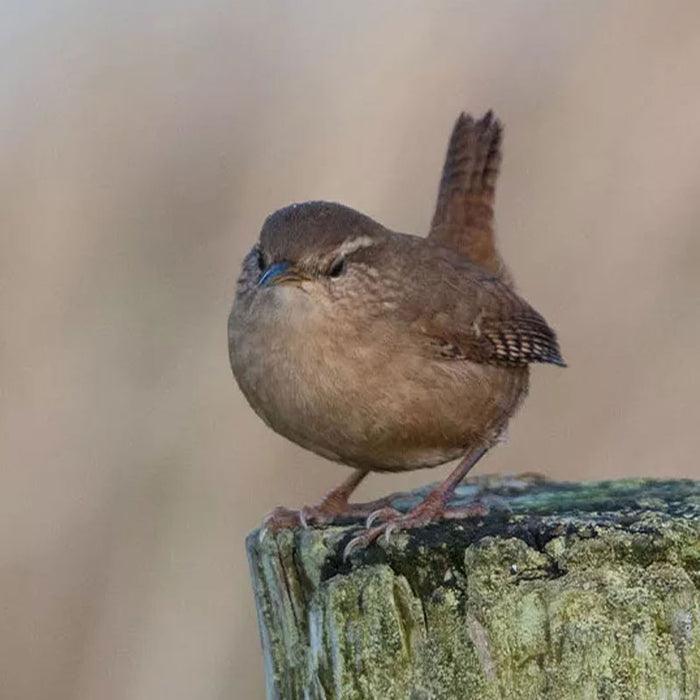
Wren
Despite being one of Britain's smallest birds, wrens are known for their loud and melodious song. They have brown plumage with distinctive barring and are often found darting in and out of dense vegetation in search of insects. Wrens are a common sight in gardens, woodlands, and scrubland habitats.
View >>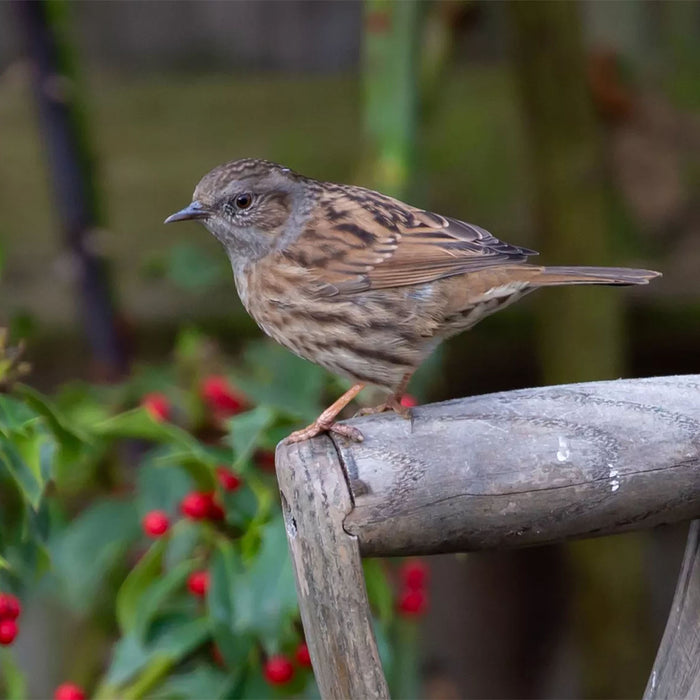
Dunnock
Dunnocks, sometimes called hedge sparrows, are small brown birds with subtle streaked plumage. They are often seen foraging on the ground beneath bushes and hedges, where they search for insects and seeds. Dunnocks have a melodious but relatively quiet song, often heard during the breeding season.
View >>The British tit family, known for its charming and lively members are amoung many garden birds that visit our gardens each year. Including the blue tit, great tit, coal tit, and long-tailed tit, each possessing distinctive features and behaviours. These tit species add a delightful touch of liveliness to gardens, flitting through branches in search of insects or visiting bird feeders for seeds and nuts.
The Tit bird family
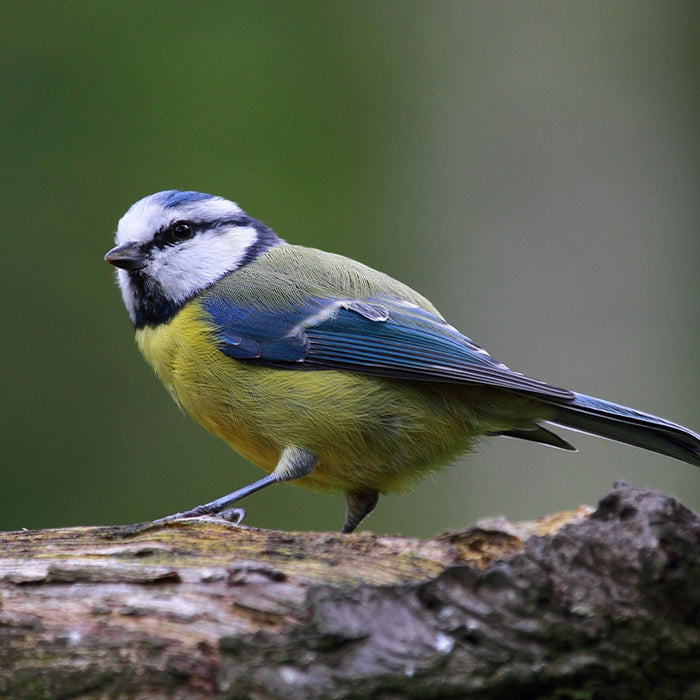
Blue Tit
Recognisable by its vibrant blue and yellow breast, the blue tit is a frequent visitor to bird feeders in British gardens. Agile and acrobatic, these tiny birds flit from branch to branch in search of insects or seeds. Their presence adds a splash of colour to any garden scene.
View >>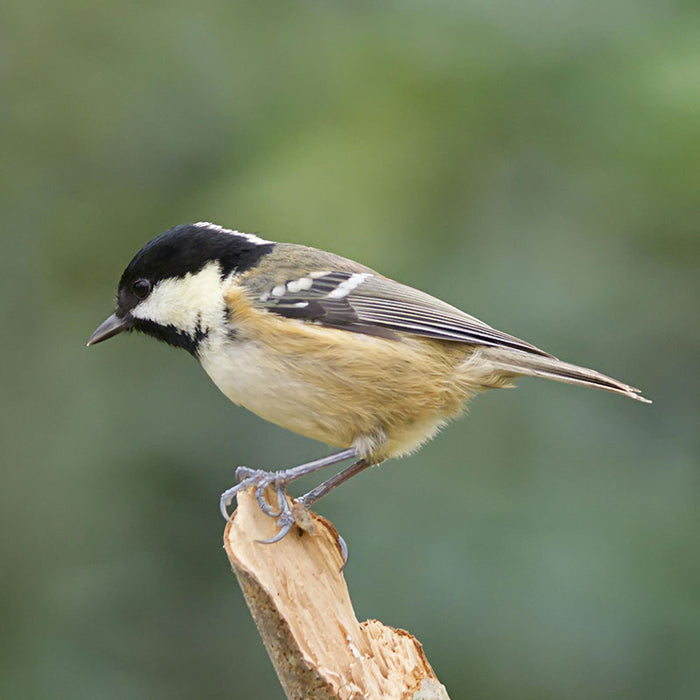
Coal Tit
With its distinctive black cap and bib, contrasting with white cheeks and a pale belly, the coal tit is a charming addition to any garden birdwatcher's checklist. They are small birds, often seen flitting about in trees and shrubs, exploring for insects and seeds. Coal Tits are known for their acrobatic movements as they navigate through branches with agility.
View >>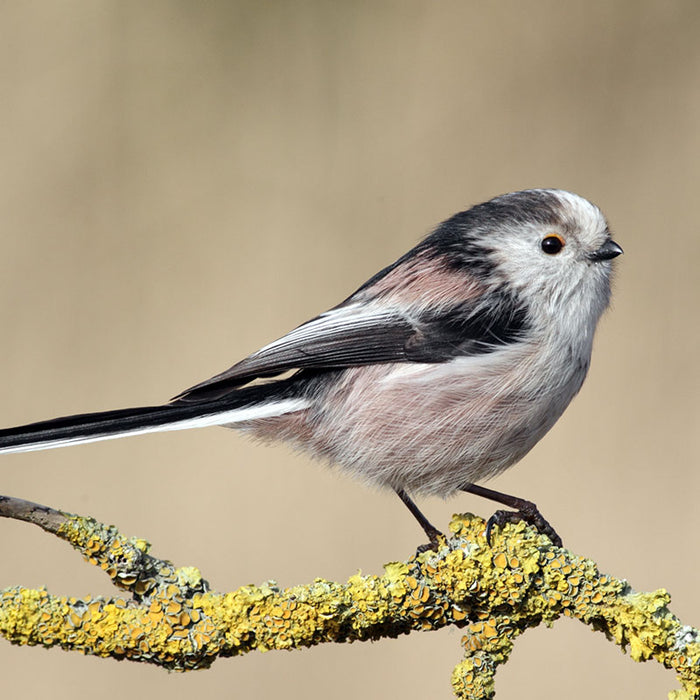
Long-Tailed Tit
The male blackbird, with its glossy black plumage and striking yellow beak, is a common sight across Britain. Known for its beautiful song, particularly during the early morning hours, the blackbird adds a melodious soundtrack to garden life. They often forage for insects and berries on lawns and in shrubbery.
View >>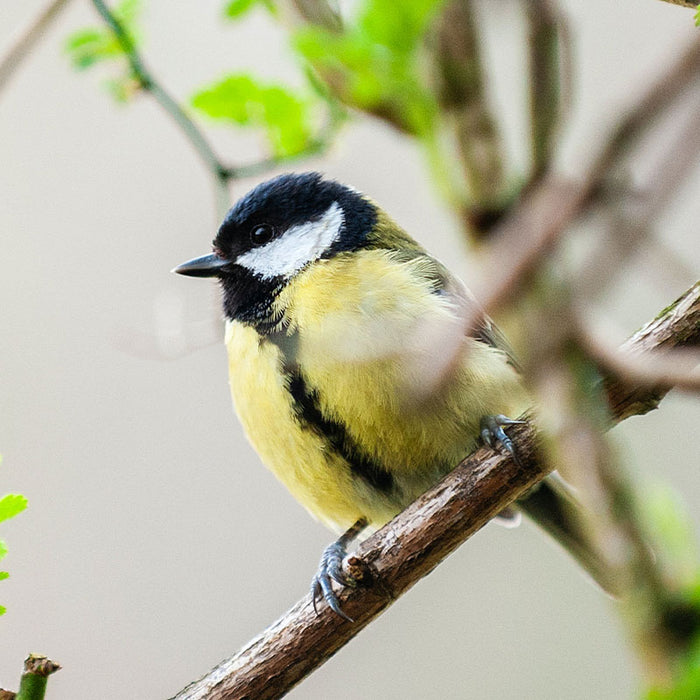
Great Tit
Similar in appearance to the blue tit but larger in size, the great tit is another frequent garden visitor. With its bold black stripe down its yellow chest, it's easily recognizable. Great tits are versatile feeders, consuming a wide range of insects, seeds, and even small fruits.
View >>Brown Featured Birds (Small)
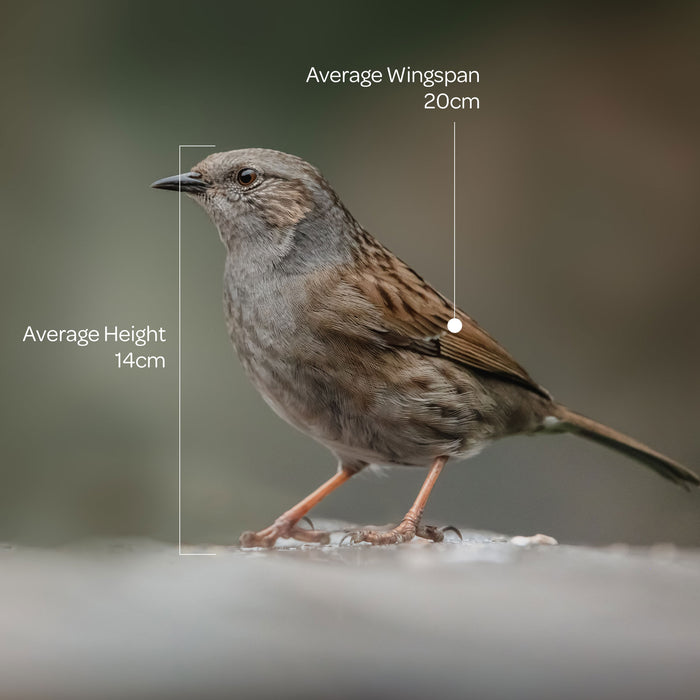
Dunnock
Key Features:
Thin beak, orange legs, pale brown mottled belly.Fact:
The dunnock is sometimes called a 'hedge sparrow' because they like hedges, but it isn't a sparrow at all!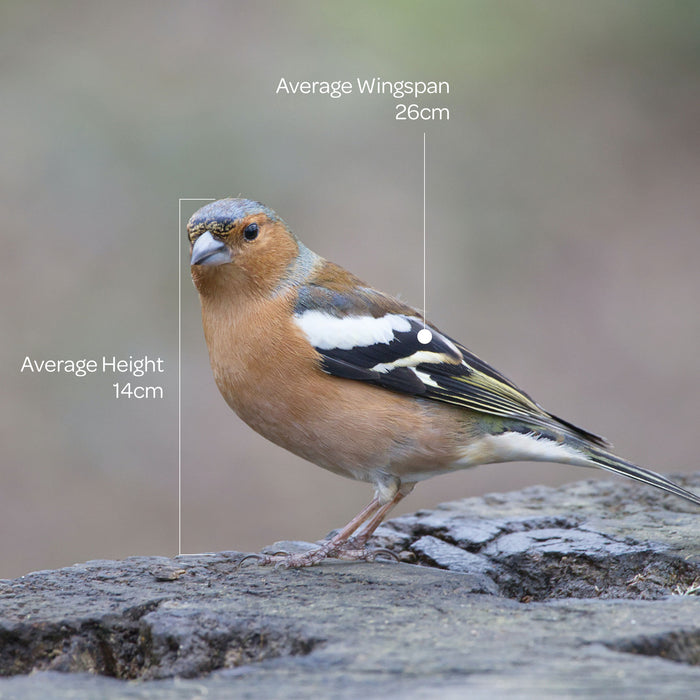
Chaffinch
Key Features:
Pinkish-brown breast, bluish cap and striped wings.Fact:
Our chaffinch population doubles in winter, as more birds arrive from other European countries.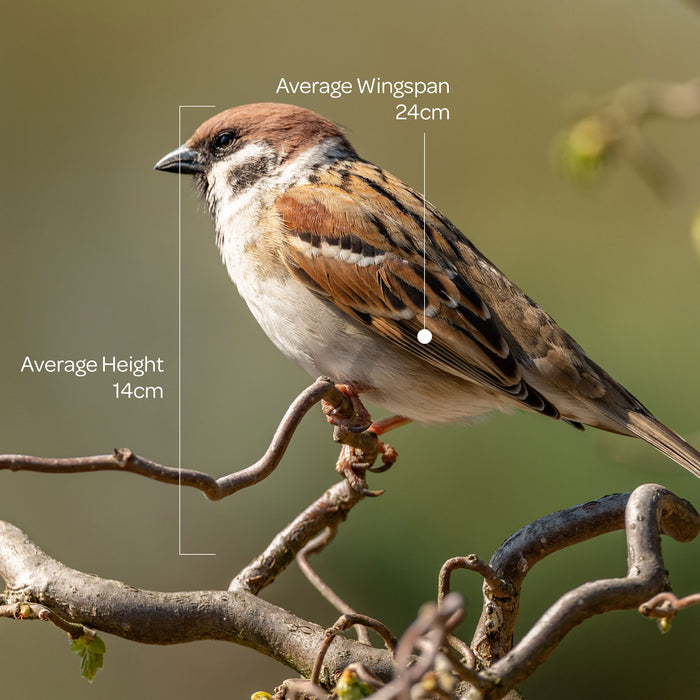
House Sparrow
Key Features:
Chestnut brown with black flecks, large dark beak.Fact:
House sparrows have a thick bill, ideal for eating large seeds. As its name suggests, this familiar bird is found around houses.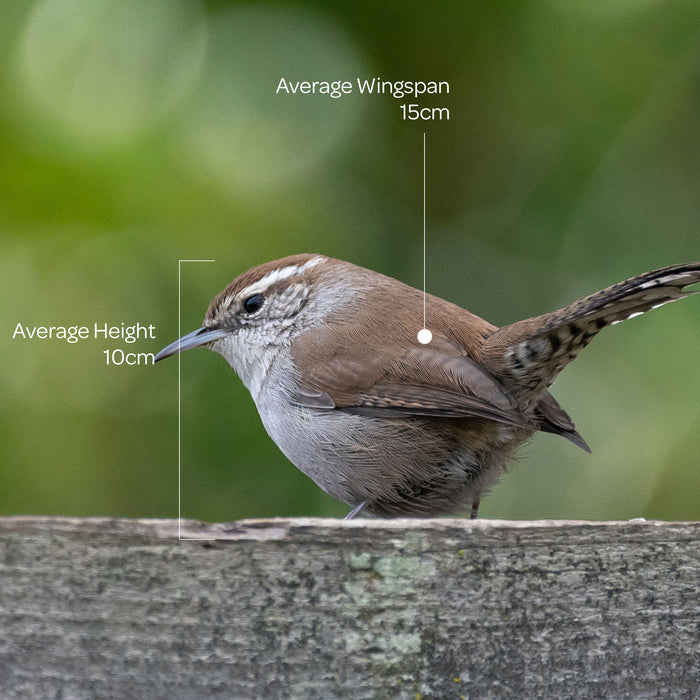
Wren
Key Features:
Small, brown bird with a sticky-up tail.Fact:
For such a small bird, the wren has a very loud voice. Listen out for its trilling song.Red & Orange Featured Birds (Small)
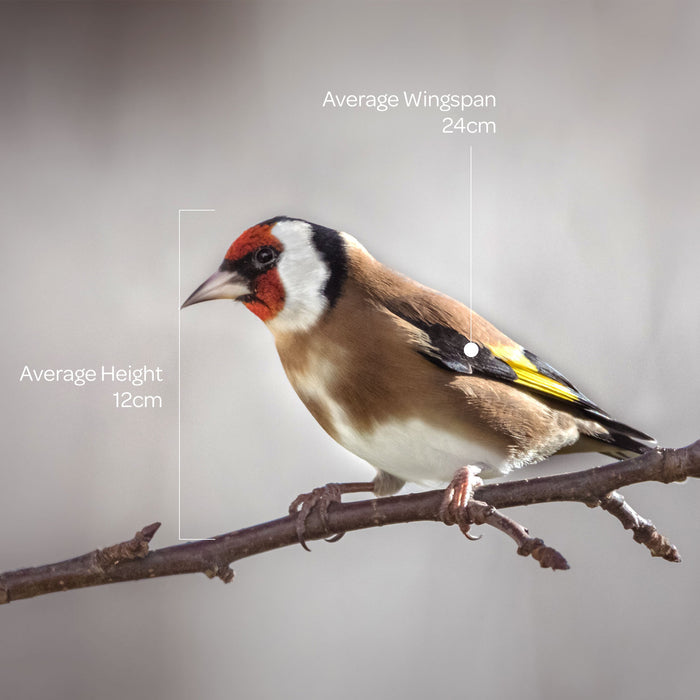
Goldfinch
Key Features:
Prominent red face with flashes of black and yellow feathers.Fact:
A group of goldfinches are called a 'charm' which is perfect for these colourful little birds.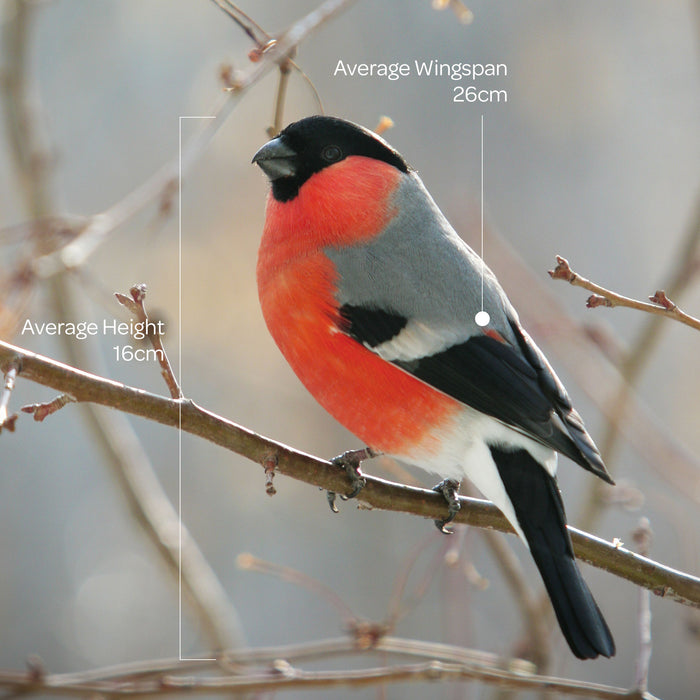
Bullfinch
Key Features:
Males have a striking coral breast, while females are peachy/ orange.Fact:
British bullfinches are rather lazy, rarely moving more than a few kilometres during their life.Green & Blue Featured Birds (Small)
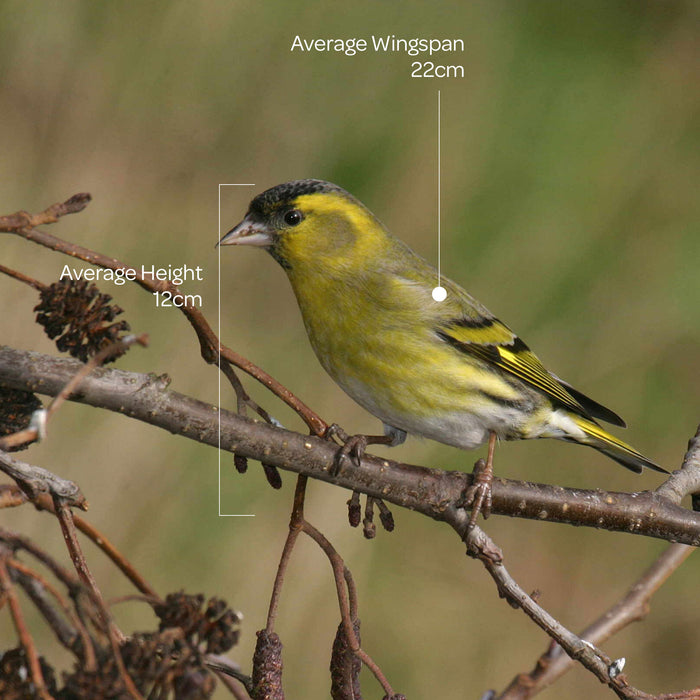
Siskin
Key Features:
Lime green feathers, black crowns.Fact:
Siskins are much smaller than greenfinches, and appear in only 18% of gardens.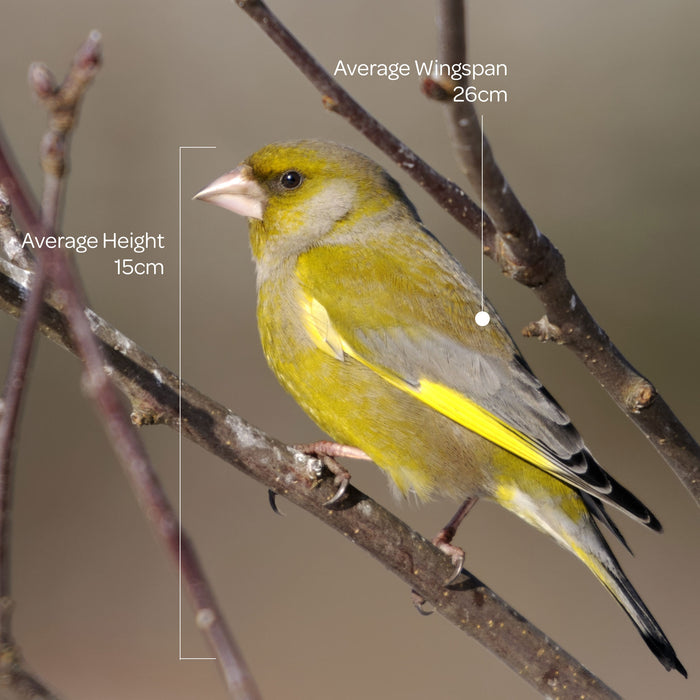
Greenfinch
Key Features:
Muted green feathers and a thick white beak.Fact:
Greenfinches were once woodland birds but they have learnt to visit gardens and are now one of our most familiar garden birds.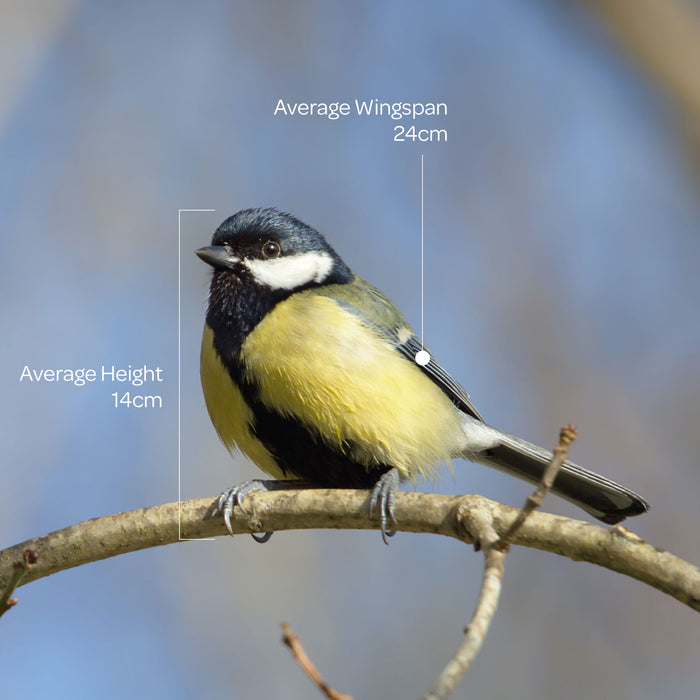
Great Tit
Key Features:
Black and white head, a yellow/green breast and back.Fact:
If a great tit has a broad black stripe running down to its belly then it is a male. The females have a narrow stripe, which doesn't reach the legs.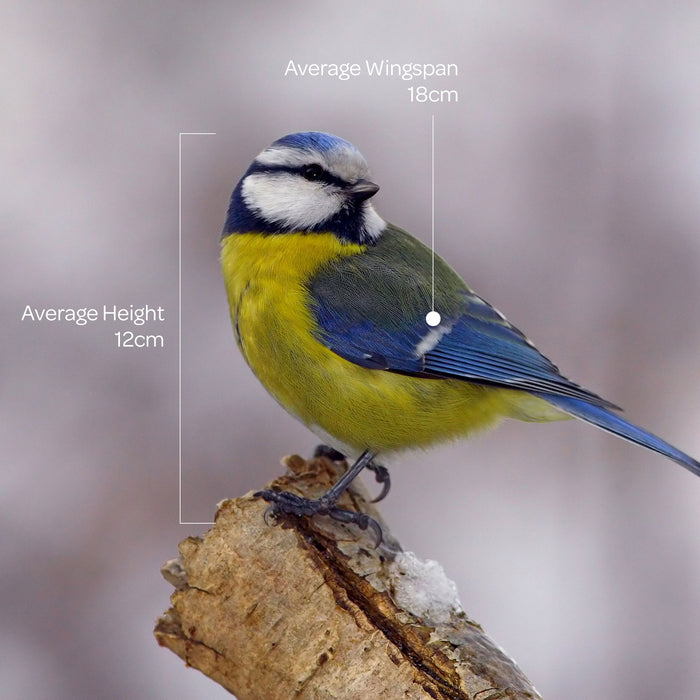
Blue Tit
Key Features:
A mostly white face with blue and green plumage, and yellow underparts.Fact:
Blue tits can lay as many as 13 eggs. Imagine how hard it must be for the parents to feed that many chicks!Grey & Black Featured Birds (Small)
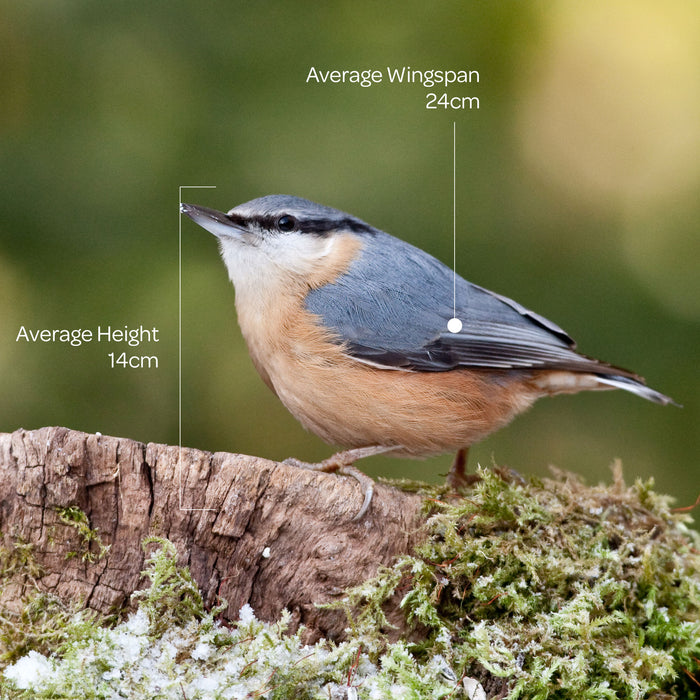
Nuthatch
Key Features:
Peachy coloured breast, grey back.Fact:
The nuthatch is the only bird than can walk down a tree trunk head-first. It uses its sharp bill to open tree seeds.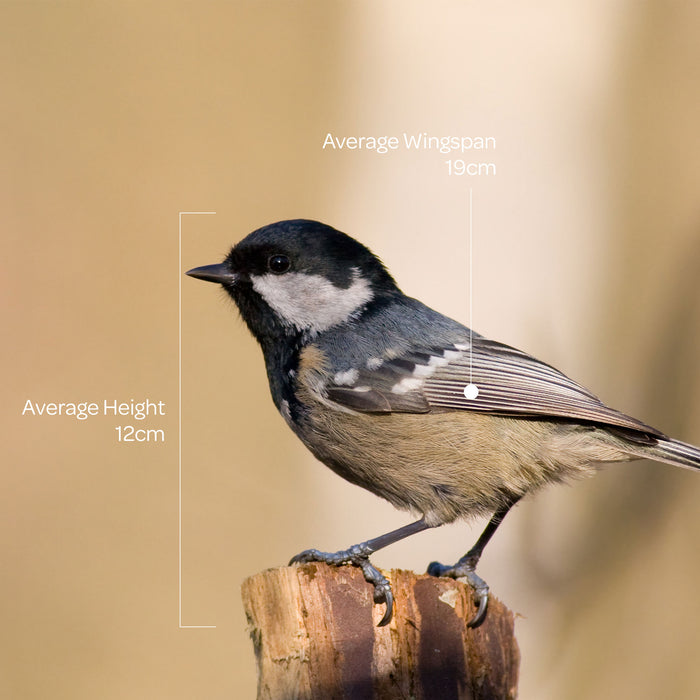
Coal Tit
Key Features:
Black cap, white cheeks, black and white back. Its underparts can appear green or pinkish.Fact:
The coal tit is a shy garden visitor. The best way to identify one is by the white patch on the back of its head.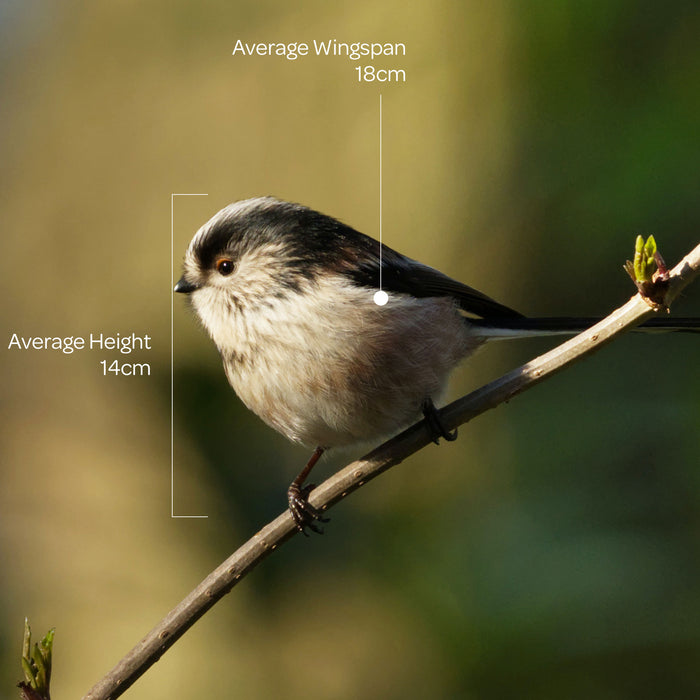
Long Tailed Tit
Key Features:
Fluffy black and white plumage, plus a very long tail.Fact:
At a staggering 9g, they weigh in at less than a £1 coin. You can find them travelling in big groups.Medium Garden Birds
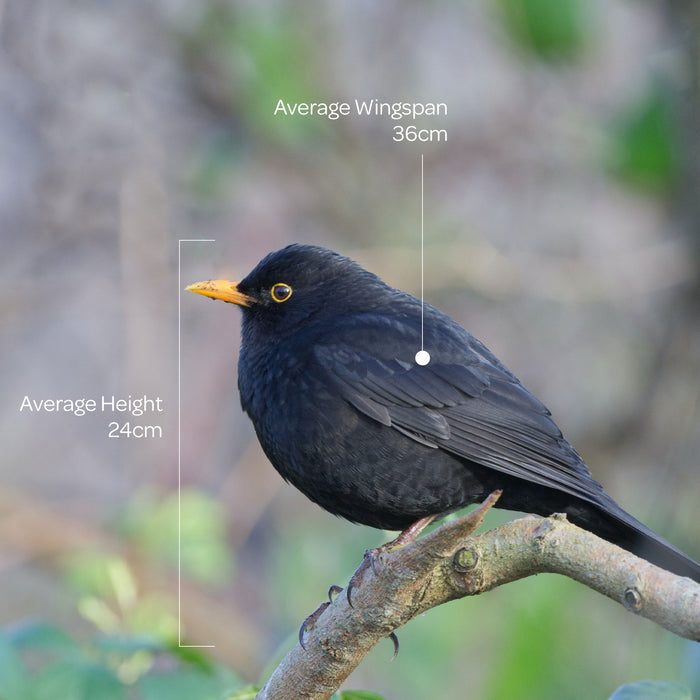
Blackbird
Key Features:
Bright yellow beak and yellow-ringed eyes.Fact:
Female blackbirds are, in fact, brown! They do share the same yellow features, though.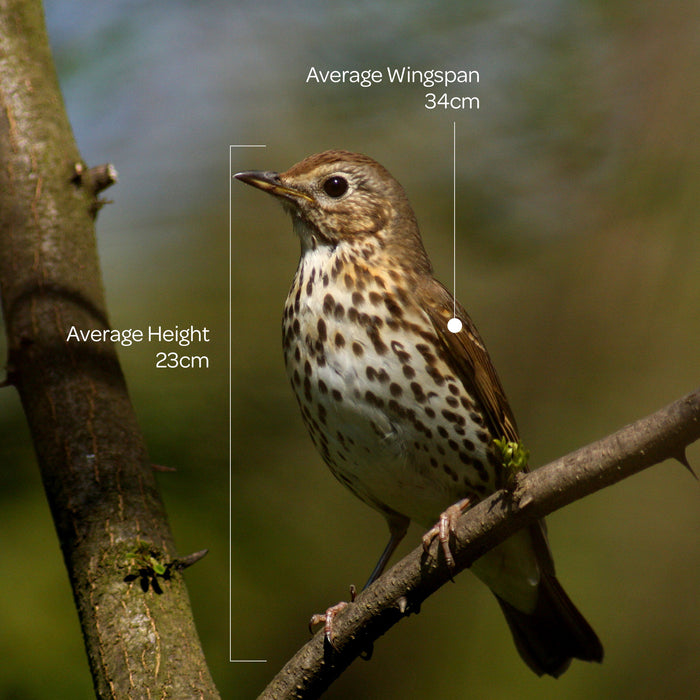
Song Thrush
Key Features:
Brown in colour with a speckled cream breast.Fact:
The song thrush lives up to its name, having a tuneful song. It repeats each phrase two or three times.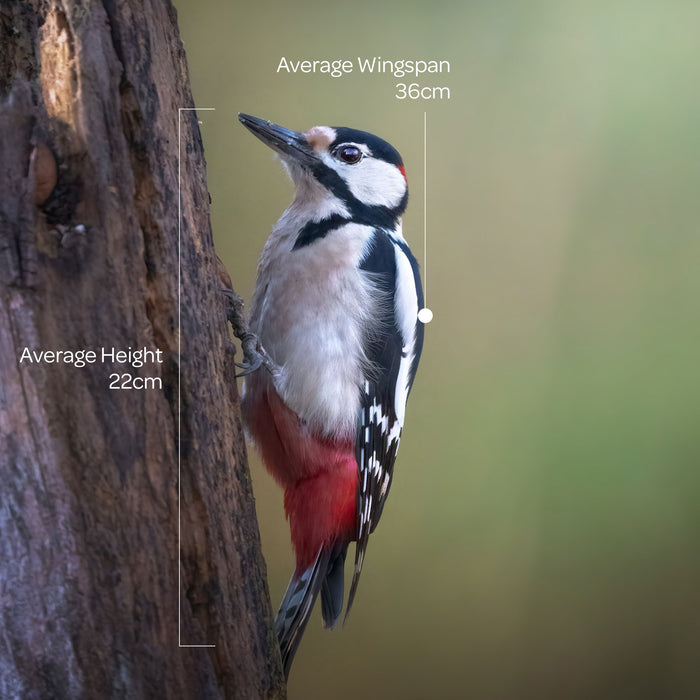
Great Spotted Woodpecker
Key Features:
Black and white plumage and red under tail. Males and females can be identified because males have a red marking on their nape whilst females don't have this.Fact:
Did you know, sometimes a woodpecker can be heard drumming into a tree from 400m away?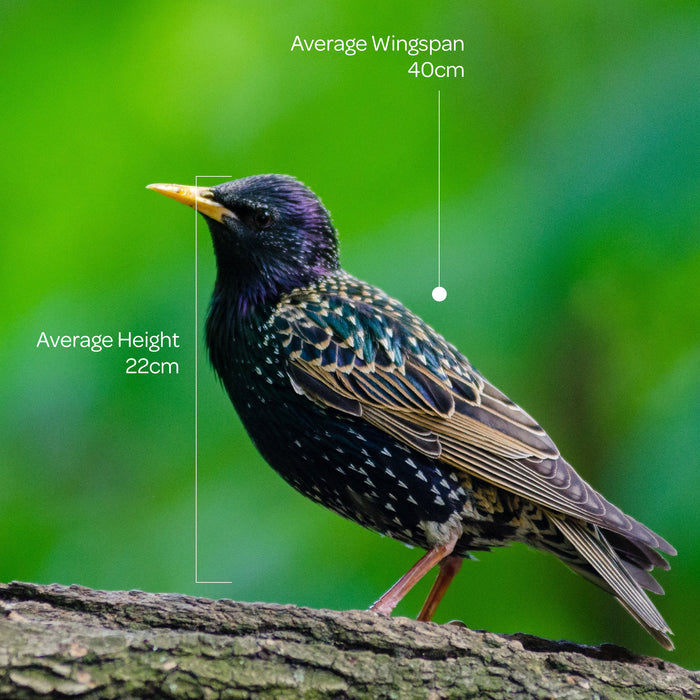
Starling
Key Features:
Glossy black plumage with purple and green metallic sheen.Fact:
Starlings are among the most social of birds, and this is particularly noticeable in winter when they feed in flocks and roost communally.Large Garden Birds
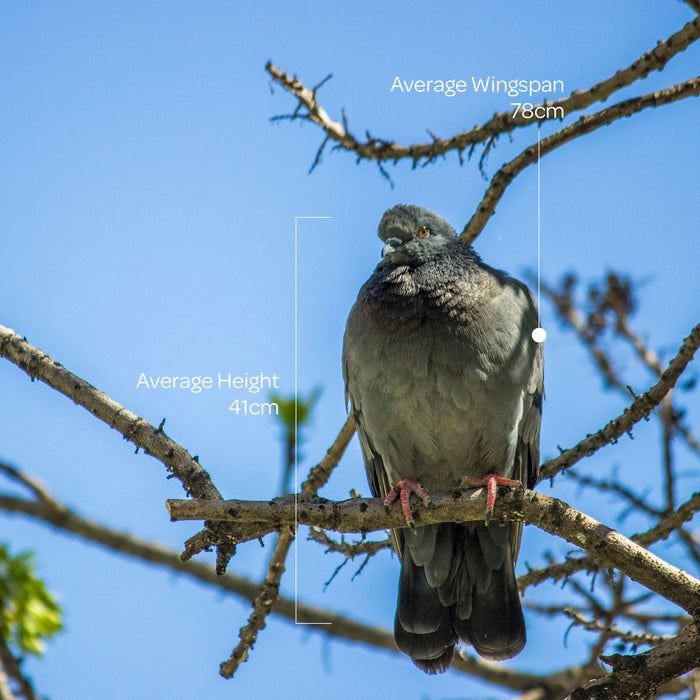
Woodpigeon
Key Features:
Small, grey heads, white neck patches, a pink breast, and grey bodies.Fact:
Woodpigeons are one of the few birds to produce ‘crop milk’ for their young. This ‘milk’ is more nutritious than cows’ milk.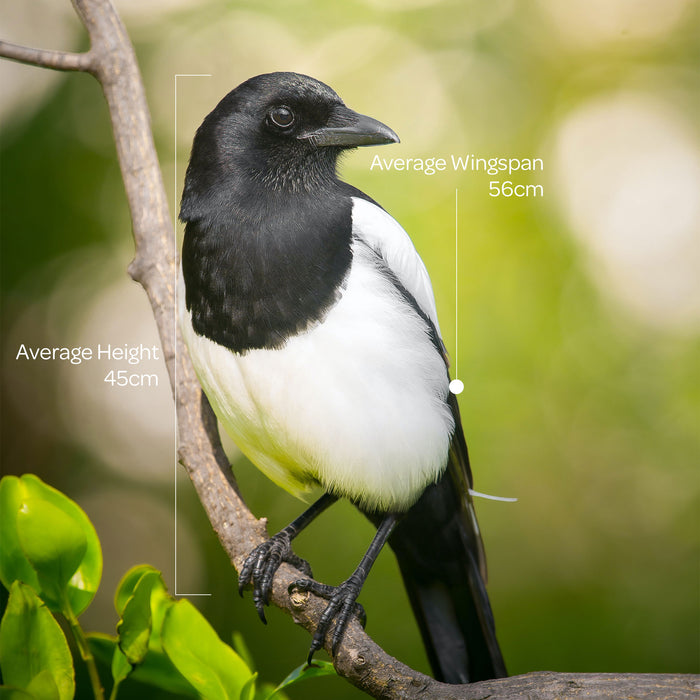
Magpie
Key Features:
Petrol black and white plumage. They’re also very noisy!Fact:
There are lots of folk stories about magpies. Some people believe that you should say ‘hello Mr. Magpie’ when you see one to avoid bad luck.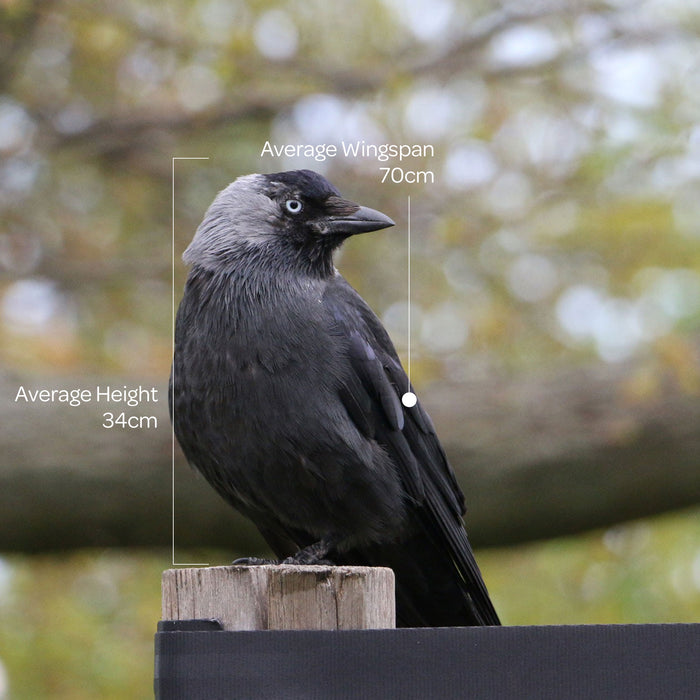
Jackdaw

